Results 2,361 to 2,370 of 12096
Thread: Anandtech News
-
11-09-12, 11:30 PM #2361
Anandtech: BitFenix Ghost Case Review: Begging for the Premium Treatment
In the short time that they've been around, BitFenix has consistently proven an interest and willingness to design cases that are at the feature curve while being price competitive and offering a distinctive aesthetic and features. It sounds like a PR line, but it's true: the Merc series are among the best budget cases on the market, the Shinobi is a solid case in its own right, and the Prodigy was actually selling out for months after its release. In many ways they remind me of Corsair and Fractal Design; in the enclosure business for a short time, but continually making strides and ensuring each release is worth some attention.
That's true again today with the launch of BitFenix's first case tuned for silence, the Ghost. It eschews some of the design language that's become de rigeur for BitFenix (specifically the soft-touch plastic surface), but has some smart new design choices and more importantly, it hits a price point silent cases very rarely hit (outside of NZXT's H2): $99. So does the Ghost live up to its potential, or does it just leave us begging for more?

More...
-
11-12-12, 01:30 AM #2362
Anandtech: AMD Announces FirePro S10000
Kicking off this week is the annual International Conference for High Performance Computing, Networking, Storage, and Analysis, better known by its shortened name: SC. This year’s conference takes place in Salt Lake City, Utah, with SC12 being host to a number of product announcements. All of the major CPU and GPU vendors will be there, as will Anand, with the first major announcement of the day coming from AMD’s GPU division.
This being a supercomputing conference, AMD’s announcement of course is all about computing. AMD and NVIDIA have both made it clear that they desire to extend their GPU business into the high performance computing (HPC) space, with GPUs being a strong fit for certain workloads by offering a very high level performance for their price and relatively low power consumption. With Graphics Core Next and Kepler, AMD and NVIDIA have further refined both their hardware and software stacks to make them suitable for HPC users, and with the right tools finally in hand the SC conference has become an increasingly important venue for the two companies. As the largest North American supercomputing conference is the ideal place to announce and show off these wares to prospective buyers, particularly those who may not yet be intimately familiar with the capabilities of the latest generation of GPUs.
So what is AMD showing off at SC12? Having already launched their GCN-powered FirePro S cards in August, AMD is serving up a new member of the FirePro S family to the SC12 audience: the FirePro S10000. With the FirePro S9000 already positioning itself as AMD’s top single-GPU card for servers, AMD has gone bigger for the S10000; much bigger. Intending to push total performance and power efficiency as far as they can take it, AMD is launching their first dual-GPU FirePro card.
In a nutshell, the S10000 is a dual-GPU Tahiti card, packing a pair of slightly underclocked (825MHz) Tahiti GPUs on a single board, with each GPU wired up to 3GB of GDDR5 operating at 5GHz. This puts AMD’s theoretical performance at around 5.91 TFLOPS SP performance and 1.48 TFLOPS DP performance, with an aggregate memory bandwidth of 480GB/sec. AMD is no stranger to dual-GPU cards, having released a number of dual-GPU cards in the past in their consumer Radeon lineup, but this is the first time they’ve launched a dual-GPU card like this for the professional market. The launch of the S10000 makes it the second dual-GPU server card to be released this year, joining NVIDIA’s K10 as the only other such card.AMD FirePro S Series Specification Comparison   AMD FirePro S10000 AMD FirePro S9000 AMD FirePro S7000 Stream Processors 2x1792 1792 1280 Core Clock 825MHz 900MHz 700MHz Memory Clock 5.0GHz GDDR5 5.5GHz GDDR5 4.8GHz GDDR5 Memory Bus Width 2x384-bit 384-bit 256-bit VRAM 2x3GB 6GB 4GB Single Precision 5.91 TFLOPS 3.23 TFLOPS 2.4 TFLOPS Double Precision 1.48 TFLOPS (1/4) 806 GFLOPS (1/4) 152 GFLOPS (1/16) Transistor Count 2x4.31B 4.31B 2.8B TDP 375W 225W 150W Manufacturing Process TSMC 28nm TSMC 28nm TSMC 28nm Architecture GCN GCN GCN Warranty 3-Year 3-Year 3-Year Launch Price $3599 $2499 $1249
In terms of features and functionality we’re not looking at anything new from AMD – everything S10000 does the existing single-GPU FirePro S series cards can do as well – so this is primarily a power play for AMD. NVIDIA’s Tesla K20, their double-precision monster, is due soon (having already pseudo-launched with the Titan supercomputer) while K10 already exceeds the S9000’s single-precision computer on paper. S10000 is in turn AMD’s high-end Tesla counter, and on paper exceeds both the K10 and K20 (Titan configuration) in single-precision and double-precision performance. GCN is AMD’s first “modern” GPU compute architecture, so after effectively leaving the market to NVIDIA in the last generation, AMD has no intention of letting themselves be surpassed by NVIDIA this time if they can avoid it.
To do that AMD is banking on absolute performance and to a lesser extent power efficiency. The pitch for absolute performance is relatively straightforward – at 5.91 TFLOPS SP performance and 1.48 TFLOPS DP performance the S10000 is extremely capable on paper – meanwhile power efficiency is based on where GCN stands today, with some additional gains squeezed out by being a dual-GPU card. Dual-GPU cards are traditionally chart-toppers for power efficiency thanks to a combination of binning and lower overhead, and S10000 will squeak past S9000 in terms of GFLOPS/watt. Of course all of this is on paper, and with AMD’s primary compute competition being the unreleased K20 it’s anyone’s guess what real world performance will be like.
Moving on, along with compute S10000 will also be serving an additional role as AMD’s top-end VDI card. This is the same scenario as the other S series cards; AMD doesn’t produce cards dedicated to specific server markets, so one card fills multiple roles. NVIDIA recently announced their VGX K2 card, a VDI card based roughly on the Tesla K10, so along with being AMD’s Tesla counter the S10000 is also their VGX K2 counter. AMD is primarily focusing this card on the direct GPU passthrough high performance VDI market (where each user gets a dedicated GPU), though they’re also pitching it at a candidate for higher density VDI through Microsoft’s RemoteFX technology, which allows for GPU sharing through the use of virtual GPUs.
With all of that said, based on what we’ve seen of the S10000 we’re having a hard time figuring out where exactly it will fit into the server market. AMD has a very clear need for a higher performance part to hold off NVIDIA’s Tesla and VGX products, but the issue they face with the S10000 is one of design and power consumption. Traditional high-end server cards like the Tesla K10 and FirePro S9000 are in the 225W-250W TDP range; meanwhile the S10000 significantly overshoots that, coming in at 375W. Typical servers are not able to accept cards with power consumption this high, nor are they setup to cool such a card, so as a result the S10000 will require a custom chassis capable of meeting its particular power and cooling needs. With this in mind, AMD may promote it as a server card but the design and specs make far more sense for a workstation card, which thankfully is something it can certainly be used for regardless of the name. Otherwise it’s not clear to us if there’s anything other than a niche market for the S10000 in servers.
Wrapping things up, AMD will be launching the S10000 at $3599, $1100 over the S9000. AMD has already started shipping the card to key strategic partners – this announcement appearing to be intentionally delayed to line up with SC12 – so they should beat the yet to be released Tesla K20 to market.

More...
-
11-12-12, 08:30 AM #2363
Anandtech: NVIDIA Launches Tesla K20 & K20X: GK110 Arrives At Last
Continuing our SC12 related coverage today, while AMD was the first GPU announcement of the day they are not the only one. NVIDIA is also using the venue to launch their major GPU compute product for the year: Tesla K20.
Upon completion of K20 a bit earlier this year, NVIDIA dedicated most of the initial K20 allocation to Oak Ridge National Laboratory’s Titan supercomputer, completing delivery on a contract years in the making. With Titan complete NVIDIA can now focus their attention and their GPU allocations towards making the Tesla K20 family available to the public at large. With SC12 and the announcement of the new Top500 list as their backdrop, today NVIDIA will be officially launching the Tesla K20 family of compute GPUs.

More...
-
11-12-12, 10:00 AM #2364
Anandtech: Titan Takes #1 Spot on Top500 List with 17.59 Petaflops in LINPACK
Last month I took a tour of Oak Ridge National Laboratory and visited the final stages of the assembly of the Titan supercomputer. Titan brings together 18,688 compute nodes, each complete with a 16-core AMD Opteron 6274 CPU and an NVIDIA Tesla K20X GPU. The total core count ends up at 299,008 AMD x86 CPU cores and 50,233,344 NVIDIA GPU cores. Each CPU gets 32GB of DDR3 while each GPU is paired with 6GB of GDDR5 for a total of 710TB of memory in Titan altogether. The entire machine will use as much as 9 megawatts of power under full load.
I described some of the types of applications that will run on Titan in our earlier article, but one of the first applications that Titan was tuned for was the LINPACK benchmark. The Top500 list of world's fastest supercomputers as measured by LINPACK is updated twice a year: in June and November. The Titan upgrade was completed just in time to tune and run LINPACK on the machine and submit an official score. As with any new system there's always the threat of hardware or software issues, but luckily the teams working on Titan were able to upgrade all 18,688 compute nodes and get this system stable and running in time to meet the November deadline for submissions.
The result is very impressive, a score of 17.59 petaflops in the LINPACK benchmark while drawing 8.21MW of power. Titan's first LINPACK score gives it the first place position on the Top500 list of supercomputing sites. Number two on the list is IBM's BlueGene/Q system using PowerPC A2 CPUs and delivering 16.33 petaflops.
Gallery: Oak Ridge National Laboratory Tour - Titan Supercomputer






More...
-
11-12-12, 02:30 PM #2365
Anandtech: Google and Acer Bring Chromebooks to $199
It seems we're not through wtih new Chromebooks yet. Google's tagline for their lightweight PC operating system initiative is "Chromebooks for Everyone," and to that end they are racing to the bottom when it comes to price. The latest new Chromebook, comes from longtime Chrome OS partner Acer, and is dubbed the C7. Where the latest Samsung Chromebook is notable for its ARM architecture, the Acer C7 is a much more traditional choice, whose primary goal was containing costs. But when low cost is the target, sacrifices are made. 
 
Firstly, the comparison point for this device shouldn't necessarily be its immediate competition, the new Samsung Chromebook, but rather that notebook's immediate predecessor the Samsung Series 5 550. This was the flagship for the last generation of Chromebooks and was notable for its Intel Core-based Celeron 867 processor, 4GB of RAM and capable 16GB NAND storage. The improvement in performance over prior Chromebooks was palpable because of the increased CPU and GPU performance. The Acer C7 is, generally, a step back in all specifications. The processor is the slightly slower Celeron 847, the RAM drops to 2GB and the NAND storage is omitted in favor of a traditional mechanical drive. The 320GB mechanical drive is the biggest concession to cost savings, as it makes almost no sense for an OS so clearly focused on the cloud. It also likely contributes to the battery life penalty this iteration takes; a paltry 3.5 hours, hardly a road warrior then. And if this looks at all familiar, it's because you previously came across the Acer Aspire One AO756-2641. That Windows 8 netbook matches the C7 down to the design and the sub-4 hour battery life.
But the reward for all these concessions? A price of just $199, less than half what Samsung's Series 5 550 goes for still, and slightly more than $100 below the Windows iteration. The price includes 100GB of Google Drive for two years, and 12 GoGo inflight WiFi sessions, and is surely the cheapest way to a Core-based system, even if it is a Celeron. One thing is clear, no matter the market, Google intends to compete if not dominate on price. And if that means better gear at lower prices, there's little room for us to complain. 
Gallery: Acer C7 Chromebook






More...
-
11-12-12, 03:00 PM #2366
Anandtech: ASRock Vision HT: Ivy Bridge Carries the SFF HTPC Forward
The small form factor (SFF) HTPC market has been steadily growing over the last few years. As mobile processors become more and more powerful, it is becoming easier for users to be satisfied with their performance even in desktop configurations.
Before 2010, ION-based units with anaemic Atom CPUs were the only option for pre-built SFF HTPCs. ASRock was one of the first to buck the trend by introducing the Core 100 using an Arrandale CPU as a mid-range complementary offering to go with their low-end ION-based unit. Last year, we had the obligatory Sandy Bridge refresh in the CoreHT 252B, and now, the Ivy Bridge refresh in the form of the Vision HT 321B. We found the CoreHT 252B to be a decent, but not very impressive update.
With Ivy Bridge improving the power profile and also pushing up the graphics performance, has ASRock done enough in the other departments to impress us with the Vision HT? Read on to find out.

More...
-
11-12-12, 08:30 PM #2367
Anandtech: Aleutia Launches Ivy Bridge-based Relia Fanless Industrial Media PCs
Aleutia is one of the few companies focusing on fanless and rugged PCs suited for industrial purposes. They started off in 2007 with an intent to serve the social enterprise computing market. Their initial customers were government and non-profit organizations with requirements for low-cost, yet rugged and power-efficient computers. Since then, they have expanded their customer base to include organizations such as Al-Jazeera, Schlumburger etc. Aleutia PCs are guaranteed to operate reliably even in remote, hot, and dusty environments. All PCs are built to order in London, UK.
Aleutia officially launched the Ivy Bridge-based Relia fanless industrial PCs late last week. Based on the Q77 Express chipset, members of the Relia lineup can be used as fanless Industrial PCs or dual LAN servers. They have no moving parts, and are ideal for HTPC, digital signage and other custom computing applications where low power and fanless operation are desired characteristics. Aleutia claims that the lineup consumes less than 17W when idle and around 55W under full load. As is the case with most fanless PCs, the chassis itself acts as a giant heat sink. The chassis is an exclusive design for Aleutia from Streacom (through Wesena), whose designs we had covered earlier.
Gallery: Aleutia Relia Fanless Industrial Media PC





The various configuration options for the different components are provided in the table below.
We have a review unit of the Relia in-hand. If there is a particular aspect that you want to see stressed upon in the final review, let us know in the comments.Aleutia Relia Fanless Industrial Media PC Base Price $638.40 CPU Core i3-3240T + $0.00 Core i7-3770T + $318.40 RAM 4 GB DDR3-1333 + $0.00 8 GB DDR3-1333 + $48.00 16 GB DDR3-1333 Pending mSATA SSD Crucial 64 GB + $0.00 Crucial 128 GB + $78.40 Crucial 256 GB + $158.40 Hard Drives None (cables included) + $0.00 2 x 500 GB + $160.00 Operating System Barebones + $0.00 Ubuntu 12.10 x64 Pre-installed + $24.00 Windows 7 Home Premium x64 Pre-installed + $158.40 Windows 7 Professional x64 Pre-installed + $206.40

More...
-
11-13-12, 02:30 AM #2368
Anandtech: 13-inch Retina MacBook Pro Review (Late 2012)
Earlier this year Apple introduced its first Mac equipped with a Retina Display. The 15.4-inch MacBook Pro with Retina Display (henceforth rMBP) introduced a brand new, thinner and lighter chassis to the MacBook family while serving as the launch vehicle for the world's first 2880 x 1800 notebook display.
Although the 15-inch rMBP was significantly more portable than its predecessor, the number one question asked after its release was when the MacBook Air would get similar Retina Display treatment. As the first Mac with an ultra high resolution IPS panel, the value of the 15-inch rMBP was obvious, but these days the market demands extreme portability.
Over the past few years, the 13-inch notebook form factor emerged as a great balance between functional size and portability. Although many hoped for a MacBook Air equipped with a Retina Display, for the follow on to the 15-inch rMBP Apple made the logical progression and brought a Retina Display to its 13-inch MacBook Pro.
Read on for our in-depth review of the new 13-inch MacBook Pro with Retina Display.

More...
-
11-13-12, 08:00 AM #2369
Anandtech: Google Nexus 4 Review - Google's new Flagship
The Nexus One was a groundbreaking device. It was the defining moment that Google got serious about making both a real consumer electronic, and pitting the Android platform against the incumbent iOS. While you could make the case that the original T-Mobile G1 was the original Google phone, it really was with Nexus One that Google set out on its path for defining a smartphone platform and distribution model of its own. While the success of that particular handset was limited and Google’s aspirations perhaps a bit unrealistic, the truth is that the Nexus platform itself has been a growing success. Each year we see essentially the same pattern — Google chooses one OEM, one SoC vendor, and sets the Android team free toward building a tailor-made version of the next major release of Android for that combination. We’ve now had three generations of Nexus smartphones, with the Nexus 4 deriving its name from the obvious forth incantation of the same goal — an unadulterated version of Android free from OEM skinning and carrier politicking.
Read on for our review of the Nexus 4 and Android 4.2 platform revisions on that hardware.

More...
-
11-13-12, 08:30 AM #2370
Anandtech: Synology Launches SAS-Enabled Flagship 10-bay 2U RS10613xs+ NAS and RX1213
Synology is a well respected brand in the low to mid-range NAS market. However, they missed a high-end flagship in their lineup to compete against products such as the ReadyDATA units from Netgear and the TS-EC1279U-RP from QNAP. These high-end flagship units support both SATA and SAS drives and serve as a solution for SMEs (Small & Medium Enterprises) who don't need all the bells and whistles of a SAN, but still require virtualization support and scalability. Today, Synology is launching their first product to target this market, the RS10613xs+. The unit has 10 bays in a 2U form factor. It can accept both SATA and SAS drives, an essential requirement in this market. (The Synology RS3413xs+ also targets large scale businesses, but doesn't support SAS drives).
Gallery: Synology RS10613xs+





The RS10613xs+ can be connected to up to 8 RX1213sas expansion modules, each of which has 12 bays. A system based on the RS10613xs+ can, thus, scale up to 106 SAS drives in total.
Gallery: Synology RX1213sas Expander Module





The highlights of the RS10613xs+ include:
- Optimization for virtual network storage, with support for both iSCSI and NFS.
- VMWare Vsphere 5, Microsoft Windows Server 2012 with Hyper-V and Citrix XenServer certifications.
- VAAI integration, including Hardware Assisted Locking (ATS), Block Zero, Full Copying, and Thin Provisioning.
- Synology High Availability Manager for minimum downtime.
- SSD caching for improved speeds
Unlike the ReadyDATA series (and similar to the QNAP SAS-enabled TS-EC1279U-RP), the RS10613xs+ doesn't offer ZFS. Instead, the unit offers RAID for data redundancy and runs Synology's own OS, the Disk Station Manager (DSM). The detailed hardware specifications are provided below:
Though Synology doesn't explicity specify the CPU, we believe it is the Xeon E3-1240. By default, the unit comes with 4 GbE ports, but a PCIe 2.0 x8 slot is available to accommodate a dual 10GbE card. With link aggregation configured over these 6 links and SSDs in all the 10 bays in RAID5 configuration, Synology claims that the unit provides 2 TBps+ throughput and 200K+ IOPS.
The RS10613+ is priced at $7000 and comes with a 3-year limited warranty, with an option to upgrade to a 5-year plan. Do readers feel that ZFS is essential in this market? Feel free to sound off in the comments.
In other NAS news from Synology, the DS713+ was launched last week. Recently, we have seen a number of Atom-based 2-bay NAS units such as the Iomega StorCenter px2-300d (based on the Intel Atom D525). Synology's latest offering in this space is the DS713+. It has dual GbE links and can be expanded with the DX513 expansion module to become a 7-bay NAS.
Gallery: Synology DS713+





The DS713+ has the latest Intel Atom D2701 Cedarview CPU and can deliver up to 202.3 MBps read and 135.84 MBps write throughput as per Synology's claims.

More...
Thread Information
Users Browsing this Thread
There are currently 32 users browsing this thread. (0 members and 32 guests)




.jpg)



 Quote
Quote
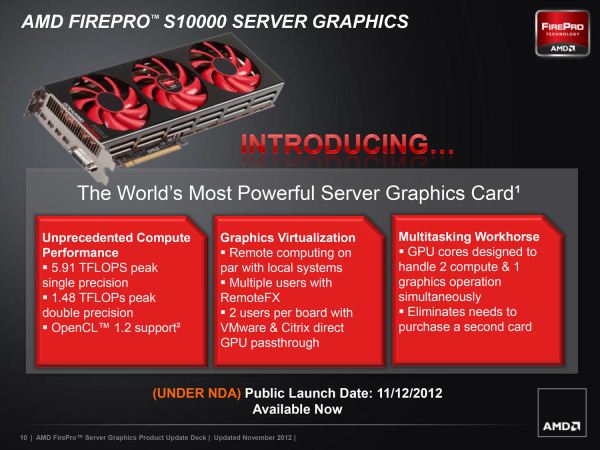
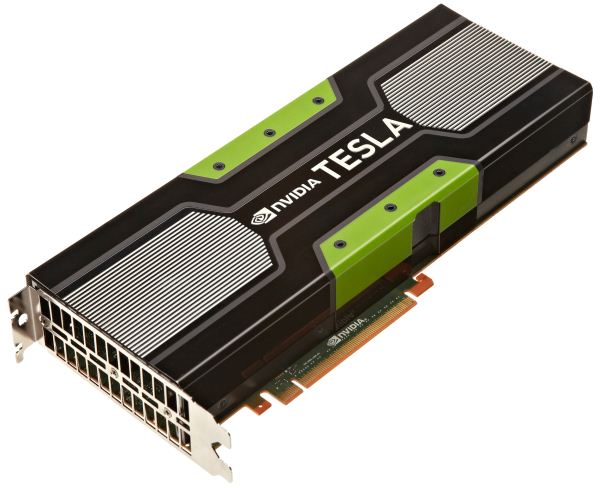

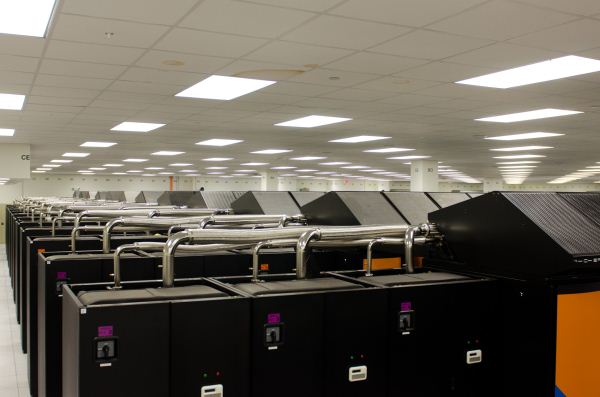
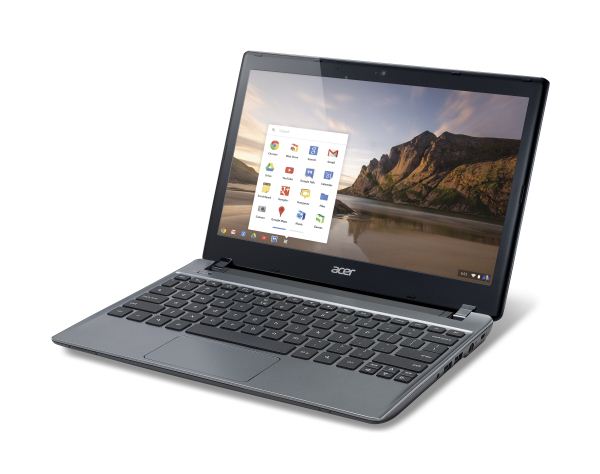
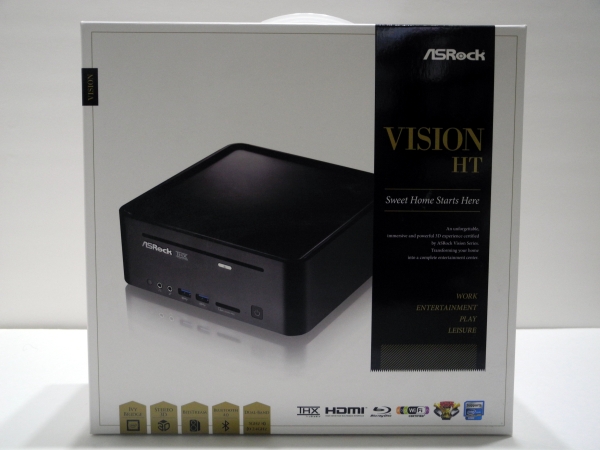

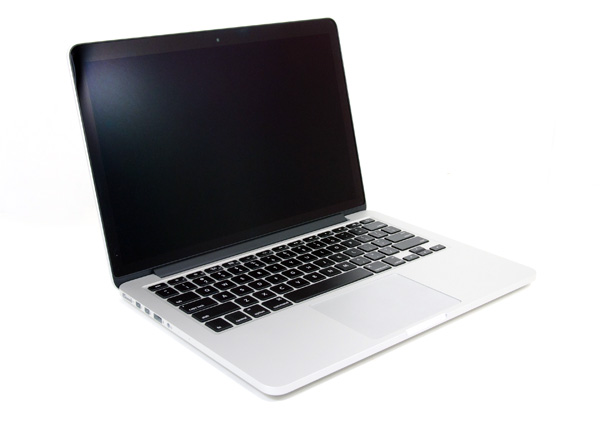



















Bookmarks